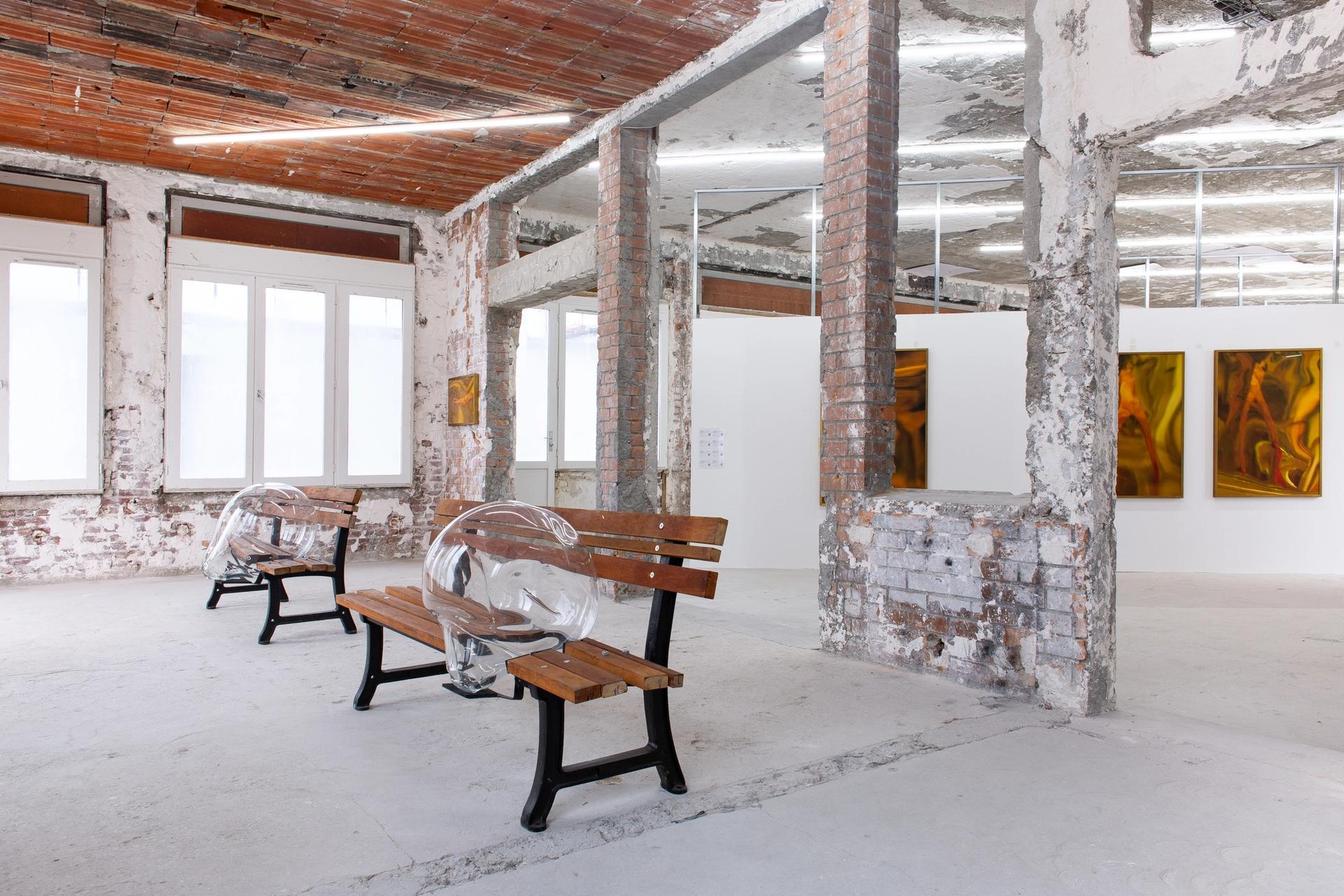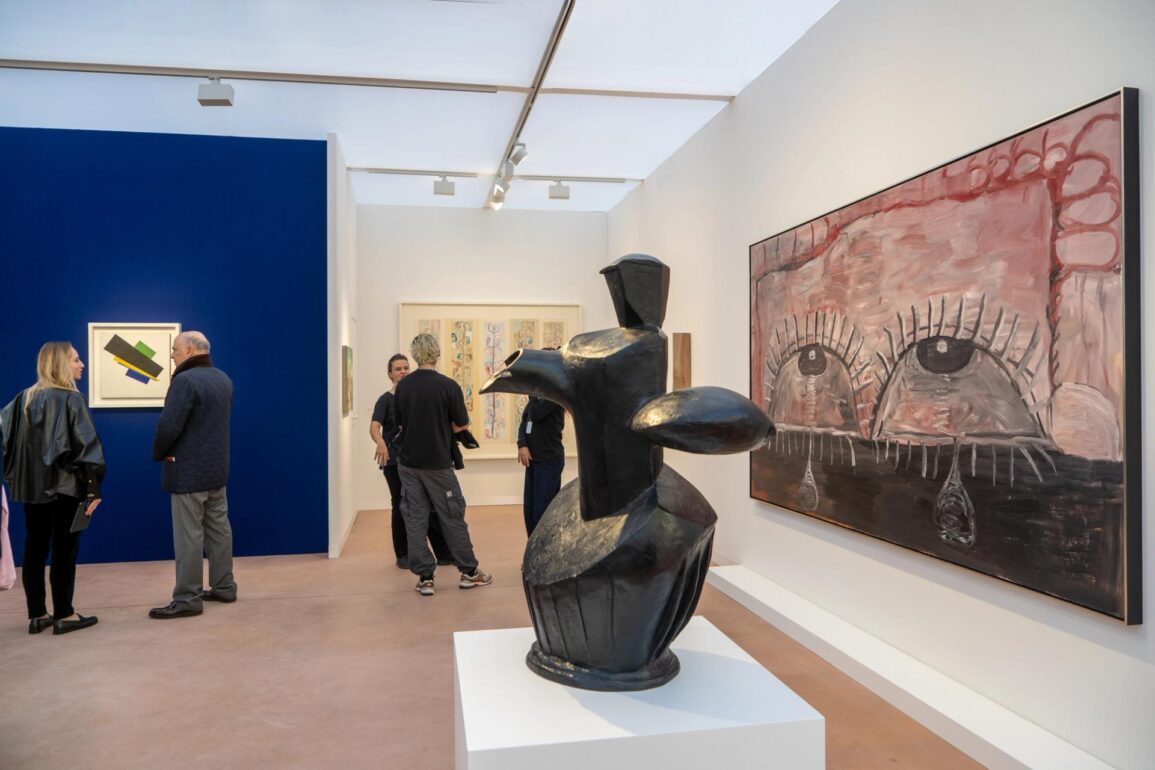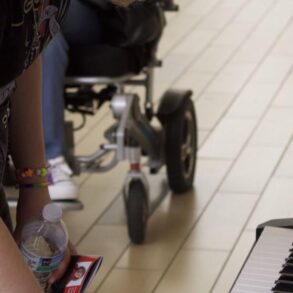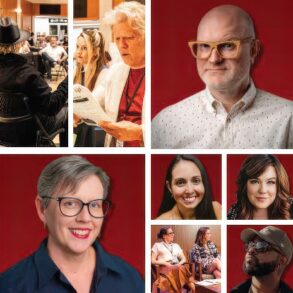The “Paris effect”, as Hauser & Wirth president Marc Payot put it, was in full swing as the third Art Basel Paris opened to VIPs yesterday at the newly renovated Grand Palais—the fair’s first outing in the late-Victorian building after two years in a temporary venue.
Even the Parisian weather was favourable with sunlight streaming through the historic glass roof as VIPs—including the Queen of Jordan, Don and Mera Rubell, Chris Dercon and Victoria Siddall—walked through the doors.
Expectations were riding high after a better-than-expected Frieze in London, which performed solidly last week in the face of wars in Ukraine and the Middle East, a depressed Chinese economy, political turmoil in the US ahead of the presidential election and—closest to home—post-Brexit woes.
France also faces its own set of economic and political challenges under a new centre-right coalition government, though there was little talk of domestic policies in the Grand Palais, where 195 galleries from 42 countries are presenting hundreds of millions of euros’ worth of works.
Whereas Frieze was founded as an art fair for the cutting edge, Art Basel has always served a more historical blue-chip market. In a nod to the fair’s secondary market status, as well as the blockbuster Surrealist exhibition currently on show at the Pompidou, White Cube is prominently showing a small canvas by Salvador Dalí from the 1940s, priced at €1.35m, on the outside of its booth.
“Why not, it’s Paris?” says Matthieu Paris, a senior director at White Cube. The gallery, which is rapidly growing its secondary market business, had also sold works by Lucio Fontana (€1.3m) and Joseph Albers (€570,000), among others, within the first few hours of the fair opening. The gallery reported the biggest sale on the opening day, Julie Mehretu’s 2013 Insile going for $9.5m.
“Business has been very good,” Paris says. His was a sentiment echoed around the fair on the first day. Historical works coming to the market for the first time proved popular on the booth of Hauser & Wirth, including a 1989 painting by Ed Clark, which sold for $950,000, and a mixed-media work on paper by Louise Bourgeois from 2006, which found a home for $2m. The majority of reported sales, however, are being made below the $500,000-mark. As an anonymous French dealer put it: “After half a million, it gets more difficult.”

An installation view of Hauser & Wirth’s booth
Courtesy of Art Basel
A buyer’s market?
Judicious pricing is keeping the market flowing, even if dealers are grappling with rising costs. “There are some good opportunities in the market—those who are smart have adjusted their prices. This is a time for buyers,” says the New York-based dealer and Independent art fair founder Elizabeth Dee.
Newer works were selling at a relatively brisk pace on the primary market; higher value secondary deals are taking longer to close. The London dealer Alison Jacques, whose booth will appeal to Surrealist tastes, quickly found homes for pieces by Sheila Hicks ($375,000) and Lenore Tawney (prices between $45,000 and $95,000). On the secondary market, a Dorothea Tanning painting from the 1970s was on reserve to a museum for $600,000.
After a “better-than-expected” Frieze London and an even better Frieze Masters, Jacques thinks the proximity in timing of the London and Paris fairs is manageable. “Being placed back-to-back is actually helpful for US and Asian clients—and this year, several opted to go to Venice for the Biennale in between,” she says.
Others question the sustainability of a congested art world calendar, with a gruelling amount of auctions and art fairs being held across the British and French capitals over a fortnight. In Paris this week, there are also a number of satellite art fairs including an expanded Paris Internationale, Offscreen, Nada (its first time in the city) and a pop-up project of eight galleries at Place des Vosges. There are also major auctions in both cities, though the volume of consignments was noticeably down in London last week.

An expanded Paris Internationale (with The Breeder’s booth shown here) is one of a range of satellite art fairs open in Paris this week
Photo: Margot Montigny
Payot suggests a week-long break (or longer) between Frieze and Art Basel in Paris could be beneficial. “Most people won’t do two fairs back-to-back. If you work in a US museum, to be away for two weeks is not sustainable,” he says.
Nonetheless museum groups were out in force during the VIP opening. Dealers noted trustees and museum officials from Detroit, San Francisco, Los Angeles, Chicago, Taiwan, Singapore, Korea and Hong Kong were in attendance while major collectors including Don and Mera Rubell and Susan and Michael Hort were seen browsing the aisles.
Dee espouses the virtue of turning up in person, though she notes how “the entire fair landscape at this scale” has become “much more professionalised”. She adds: “We don’t see as many collectors coming to any of these events, partially because they are offered everything in advance and partially because Americans in particular work a lot through the advisory system.”
Domestic shifts
As for the French market, it remains a relatively small piece of the pie, accounting for 7% of global trade, according to the latest Art Basel/UBS Art Market Report. The arrival of Art Basel as well as an influx of global mega dealers into Paris in recent years is likely to significantly boost that figure. The UK’s share, by comparison, currently stands at 17%.
Some local dealers, however, question the impact of the big galleries on the homegrown market. “For French galleries, the contradiction is that Paris has been put on the map,” says Isabelle Alfonsi, the co-founder of Marcelle Alix gallery, whose clients include luxury goods magnate François Pinault. “But for galleries of a modest size it’s not as if there’s this huge cake that we all get a piece of. It’s the biggest players who get the biggest pieces and we have to fight for the crumbs.”
Guillaume Sultana, the owner of the Parisian Sultana gallery, thinks that the city “is having its own renaissance moment”. He adds: “With the heavy-weight exhibitions at the galleries, museums and institutions, it feels like the Parisian art ecosystem is working like a well-oiled machine.”
Nonetheless, the gallerist is sceptical as to whether there are enough French collectors to sustain the influx of international galleries. “Unfortunately, there are not enough especially within the contemporary art category,” he says. “French collectors are very cultured and knowledgeable, and there is a great lineage of art collecting in France; however, they tend to be very conservative and risk averse with their collecting habits and approach when it comes to contemporary art.”
But, with its historical roots, Art Basel is well primed to bridge the gap between buyers of older and newer works, as well as bring an international audience to Paris. Payot highlights how the next generation is keen to pick up the baton. “In France, there’s an active generation of collectors who are the kids of established collectors who want to be part of the contemporary art scene,” he says.
Despite the headwinds buffeting the art market, and some logistical issues to do with unseasonably warm temperatures and a lack of catering options in the Grand Palais, Art Basel in Paris has certainly reinvented itself this year. As the New York-based cultural strategy advisor and author András Szántó puts it: “Art Basel in the Grand Palais has the novelty factor as well as the history factor. It’s a win-win.”
This post was originally published on this site be sure to check out more of their content








